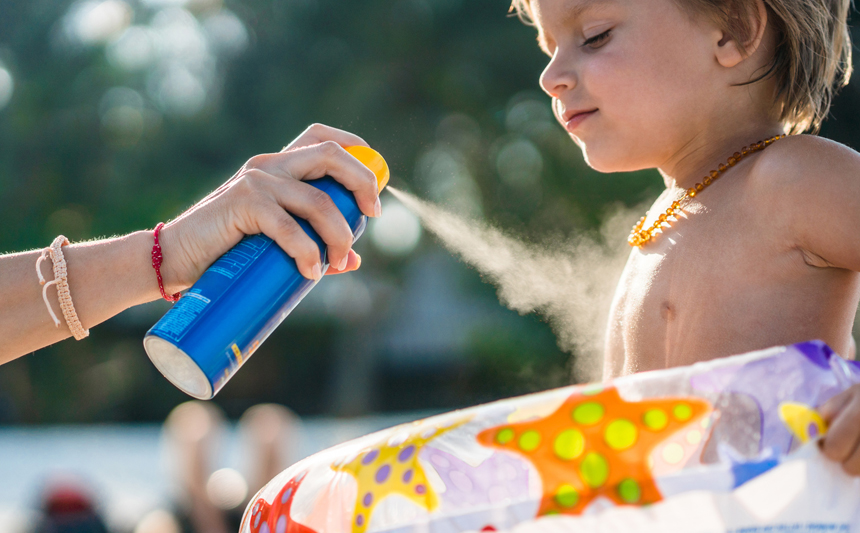Don’t get burned – here’s how to protect your skin in the sun

It only takes 15 minutes in the sun to damage your skin.
Before you head outside to enjoy the warm weather and sunshine, here’s what you need to know to protect your skin.
Sunscreen
Sunscreens are assigned a sun protection factor (SPF) number that rates their effectiveness in blocking ultraviolet (UV) rays. Higher numbers indicate more protection. You should use a broad-spectrum sunscreen with at least SPF 15, even on cool or slightly cloudy days.
Broad-spectrum on a product’s label means the sunscreen filters out ultraviolet A (UVA) and ultraviolet B (UVB) radiation exposure. UVA rays penetrate deep into the skin and are mostly responsible for premature aging and skin cancer. UVB rays affect the surface of the skin and cause sunburn.
Don’t forget to put a thick layer of sunscreen on all parts of exposed skin. Get help for hard-to-reach places like your back. Here are some additional things to keep in mind when using sunscreen:
- Sunscreen wears off. Put it on again if you stay in the sun for more than two hours and after swimming, sweating or toweling off.
- Sunscreen without an expiration date has a shelf life of no more than three years, but its shelf life is shorter if it has been exposed to high temperatures. Be sure to check your sunscreen’s expiration date.
- Some makeup and lip balms contain some of the same chemicals used in sunscreens. If they don’t have at least SPF 15, don’t use them by themselves.
Avoid peak sun
Try not to schedule outdoor activities between 10 a.m. and 4 p.m.
Shade
You can reduce your risk of skin damage and skin cancer by seeking shade under an umbrella, tree or other shelter. Even when you are in shade, be sure to protect your skin by using sunscreen or wearing protective clothing.
Clothing
Long-sleeved shirts, long pants and skirts can protect you from UV rays. Tightly woven fabrics offer the best protection. A wet T-shirt offers much less UV protection than a dry one, and darker colors protect more than lighter ones. Some clothing certified under international standards is specifically manufactured to provide UV protection.
If wearing this type of clothing isn’t practical, try to wear a T-shirt or a beach cover-up. Keep in mind that a typical T-shirt has an SPF rating lower than 15, so use other types of protection as well.
Hat
For the most protection, wear a hat with a brim all the way around that shades your face, ears and the back of your neck. Tightly woven fabric, such as canvas, works best to protect your skin from UV rays. Avoid straw hats with holes that let sunlight through. A darker hat may offer more UV protection.
If you wear a baseball cap, you should also protect your ears and the back of your neck. Wear clothing that covers those areas, use a broad-spectrum sunscreen or stay in the shade.
Sunglasses
Sunglasses protect your eyes from UV rays and reduce the risk of cataracts. They also protect the tender skin around your eyes from sun exposure.
Sunglasses that block both UVA and UVB rays offer the best protection. Wrap-around sunglasses work best because they block UV rays from entering on the side.




